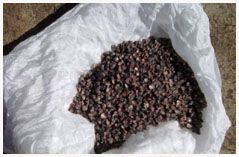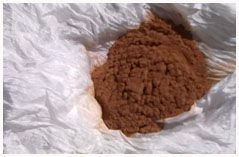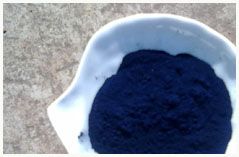Natural dyes
On this page you will find how we obtain the dyes from plants and cochineals. We obtain the base colours by drying and boiling out the plants, the plant’s cortex and of cochineal insects which live on them. By combining the base dyes, we obtain a full range of colour varieties. The dyes combine with the textile structure and give a soul relaxing harmony. As we fix the dyes with pure alum in the textile fabric, even allergic or sensitive persons will enjoy our products.
For example, reseda and dyer’s madder are the oldest known plant dyes and are in use since the Egypts have discovered them. Until about 200 years ago, plant dyes were the only available dyes. And even in these times plant dyes mean beauty and harmony of mother nature.

Cochineal are insects which can be dried to give the red purple carmine dye. The cochineal insects originate from Mexico and are nowadays as well cultivated on the Canary Islands. They are living on prickly pears (Opuntia) from which they suck the sap.

Reseda is found in southern Germany, Austria and as well as in the north of La Palma. When we dissolve the plant’s dye Luteolin in water, we get a wonderful yellow colour.

Dyer’s madder grows in the eastern Mediterranean and in south-west Asia. Its reddish roots contain the dye Alizarin red, also known as Turkish red. Dissolving it in water, we obtain a vivid orange colour.

Catechu is an acacia tree variety from South Asia. Its milled cortex releases a brown dye which is water soluble.

Indigo (or anil) is the classic blue dye. It can be obtained from the anil plant from India or from woad. As these plants contain indican, which oxidizes upon contact with the air to the well know blue colour.
